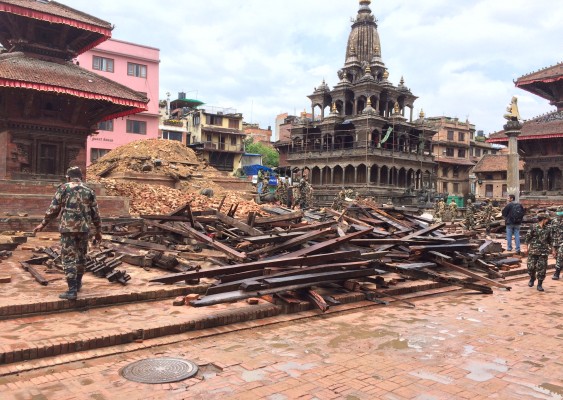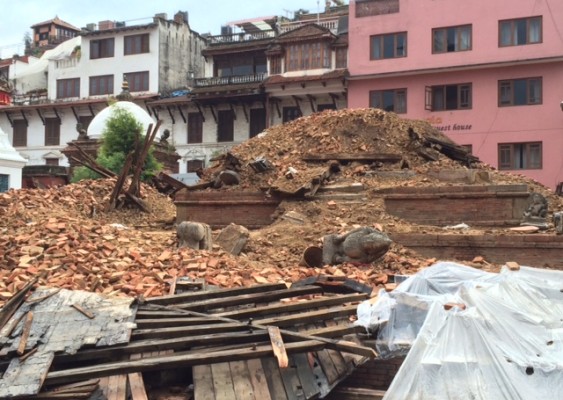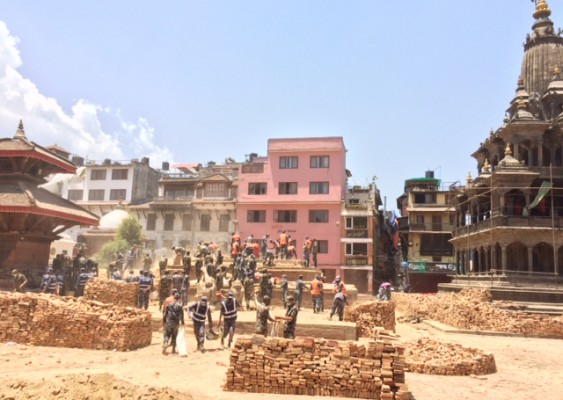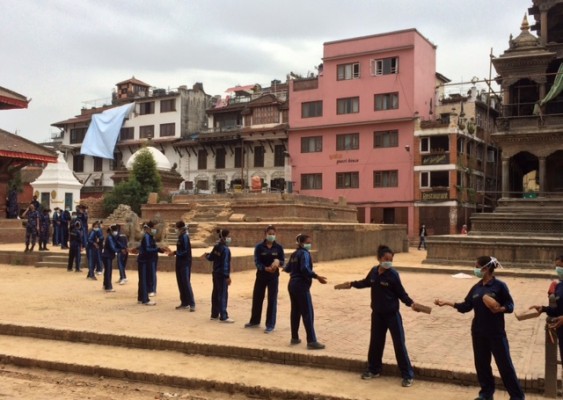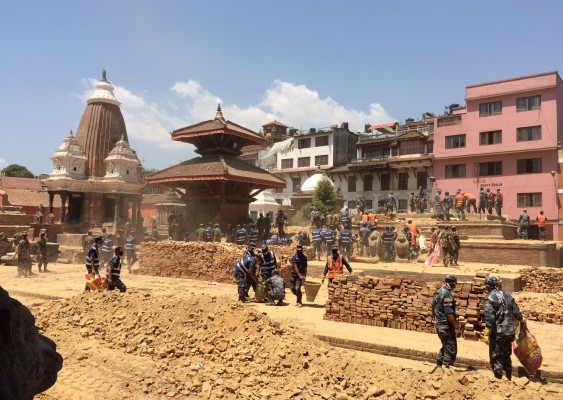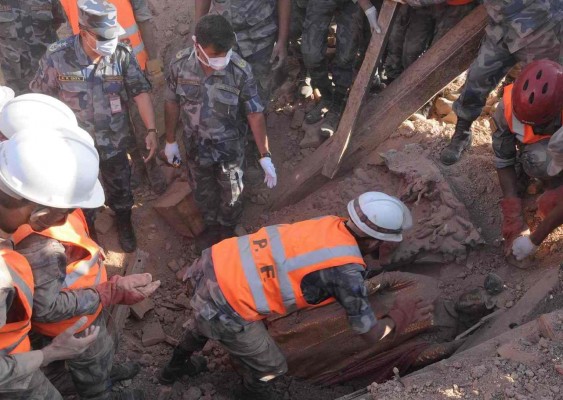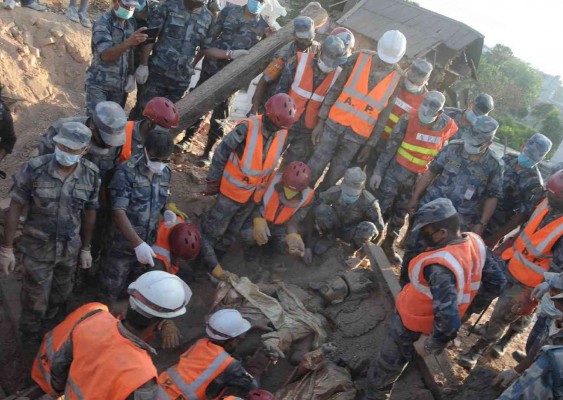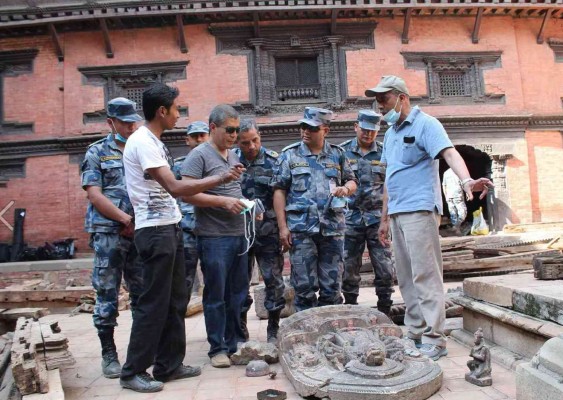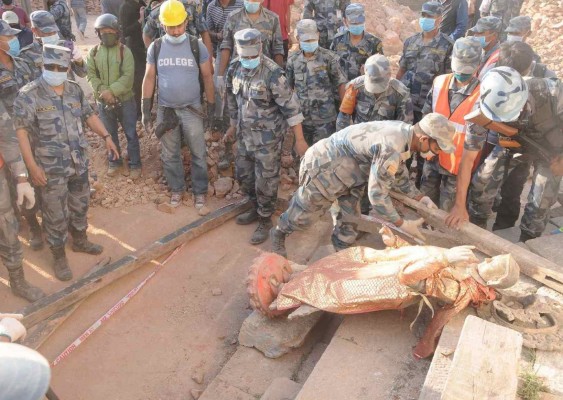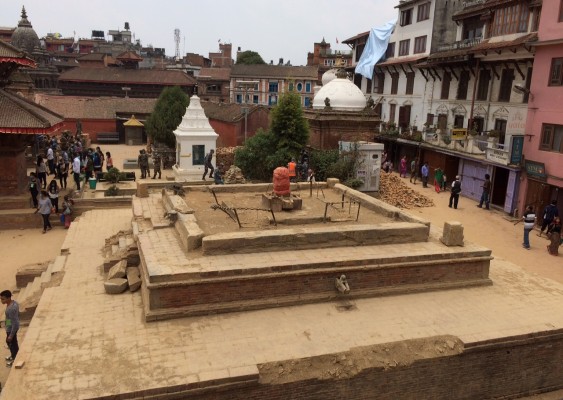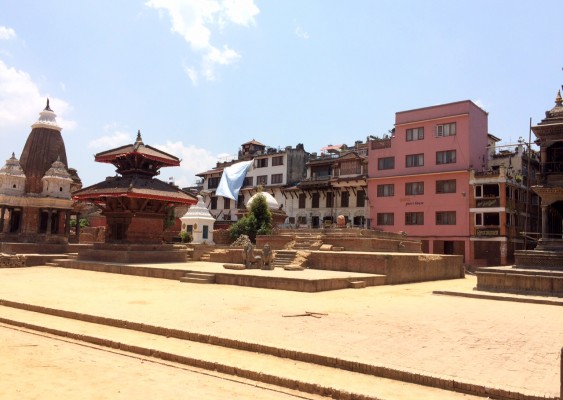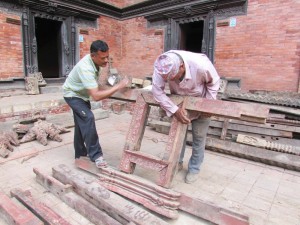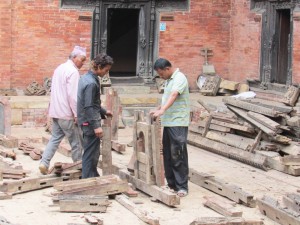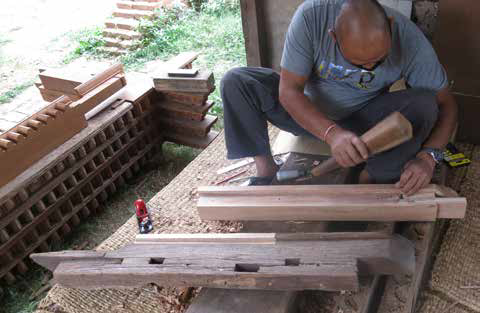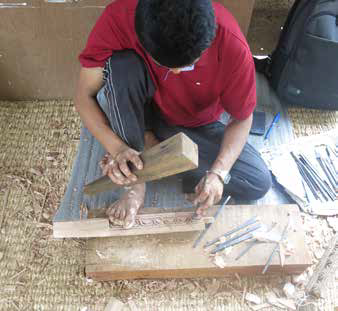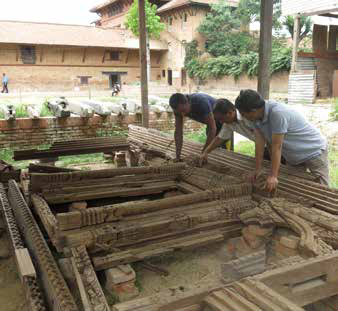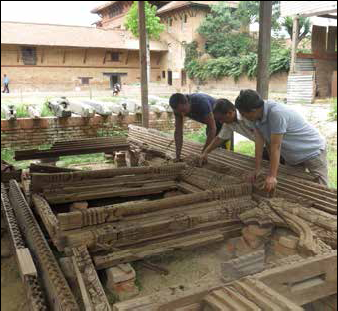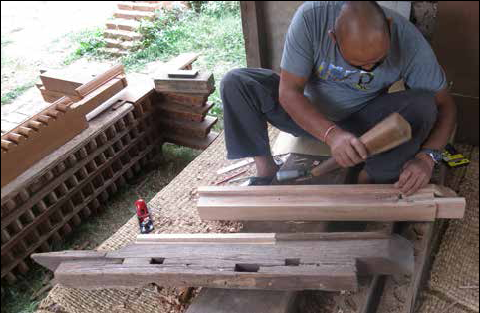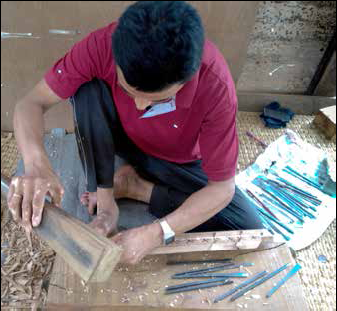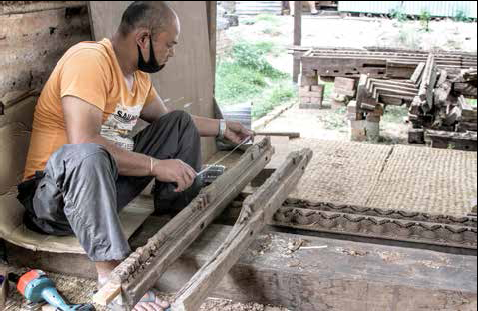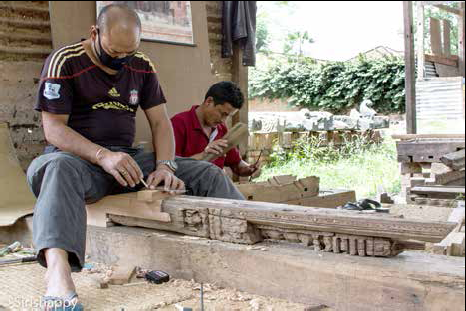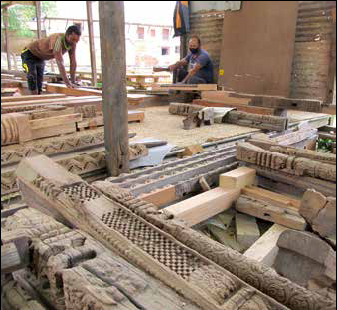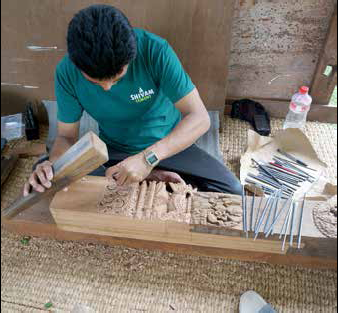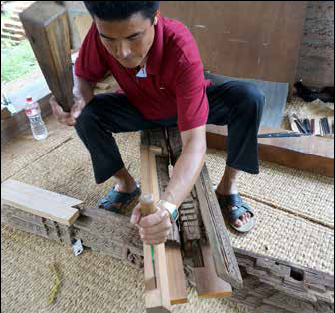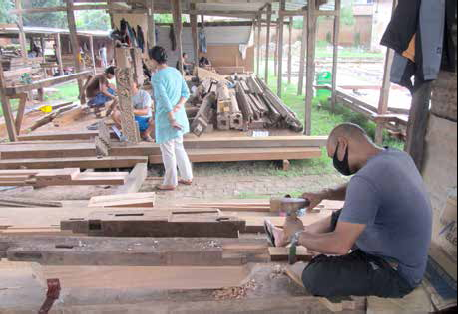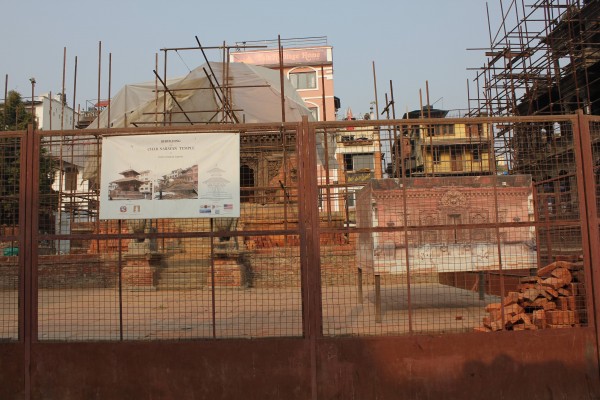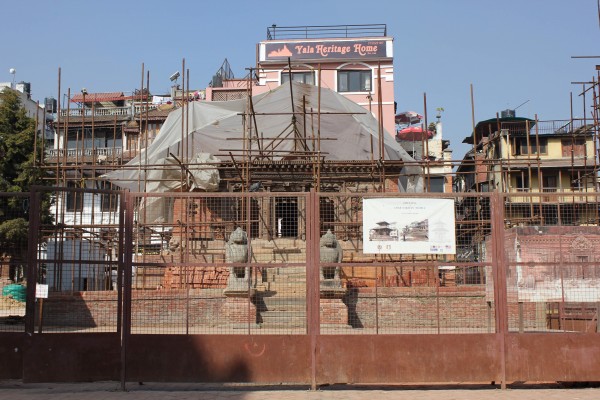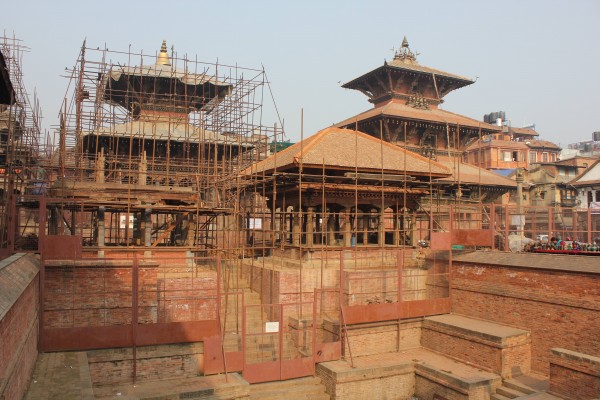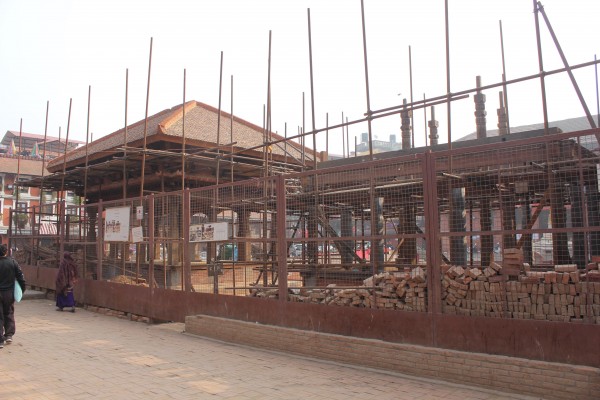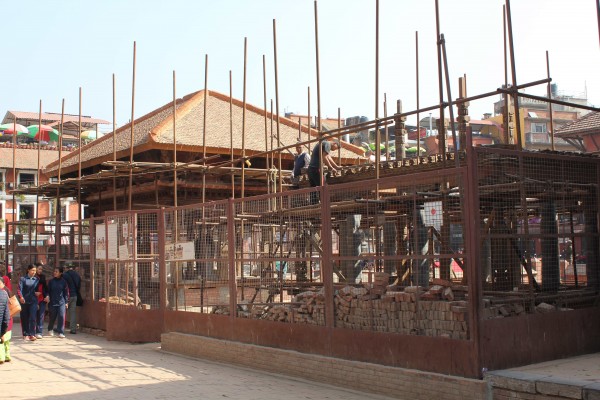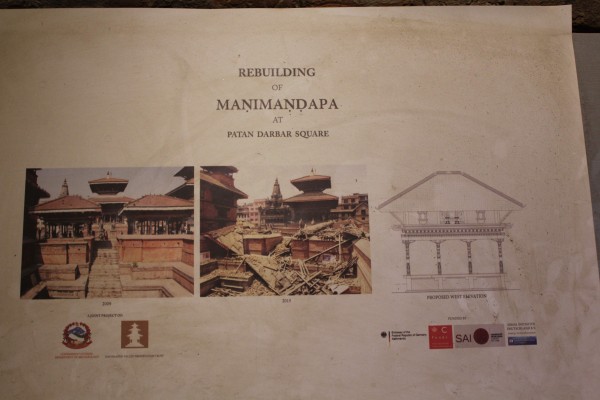Patrons in Heidelberg: Axel Michaels and Christiane Brosius
Virtually inexhaustible is the treasure of rich carvings on the temple which belongs to the classical period of Newar architecture once you take time to explore the details with your eyes and even your fingers. All fragments of the portals and struts were salvaged till the 2nd May. We can restore these and reconstruct the temple! Since May 6 the pillar with the Fourfold Vishnu is now stands under the sky on top of the stepped terrace that once bore the proud temple. Quite a few years are needed to provide shelter again. The temple was constructed in the classical Newar tradition with two pyramidal roofs and an inner ambulatory by a local ruler, Purandarasimha, in 1565. It is a Royal Temple, the consecration of which to “the birth of a king” (rajasuya). Older and in its detals and quality similar are only the western Portal of the Indreshvara Temple in Panauti and the southern portal of the Yakseshvara Temple in Bhaktapur – both temples survived the earthquake almost unharmed. Thus, the temple belongs to the indispensable heritage of Newar architecture. The temple was documented with measured drawings by Wolfgang Korn in 1971 and Adalbert Gail published an essay covering the iconography of the temple in 1984. That enables us to assign all building elements to its original place. Stanislaw Klimek and Jaroslav Poncar prepared a photographic documentation in August 2008 and August 20014. This documentation constitutes a good precondition for the temple’s reconstruction. Already two days after the earthquake, Rohit Ranjtkar of the Kathmandu Valley Preservation Trust (KVPT), which has its project office just a few paces away, mobilized 150 Armed Police and 50 policemen to salvage all valuable architectural fragments. This effort was completed on May 3 and on May 5 the heap of rubble was removed. More than a million Euro will have to be collected to allow the earthquake proof temple to reoccupy its former place. We know Rohit, whose office is above the office of Axel’s project at the Heidelberg Academy of Sciences, since many years. He is a very integer architect and head of the KVPT who dedicates his work to the preservation and restoration of Nepal’s monumental heritage. If there is somebody who can restore the Char Narayan Temple – it’s Rohit (see also the ‘news’ section where he is also appearing in a CBN interview). We have assembled some images in the following that document the temple before and after the destruction (photos and permission by S. Klimek, R. Shakya and R. Ranjitkar).
Project coordinator in Nepal: Dr. Rohit Ranjitkar (KVPT)
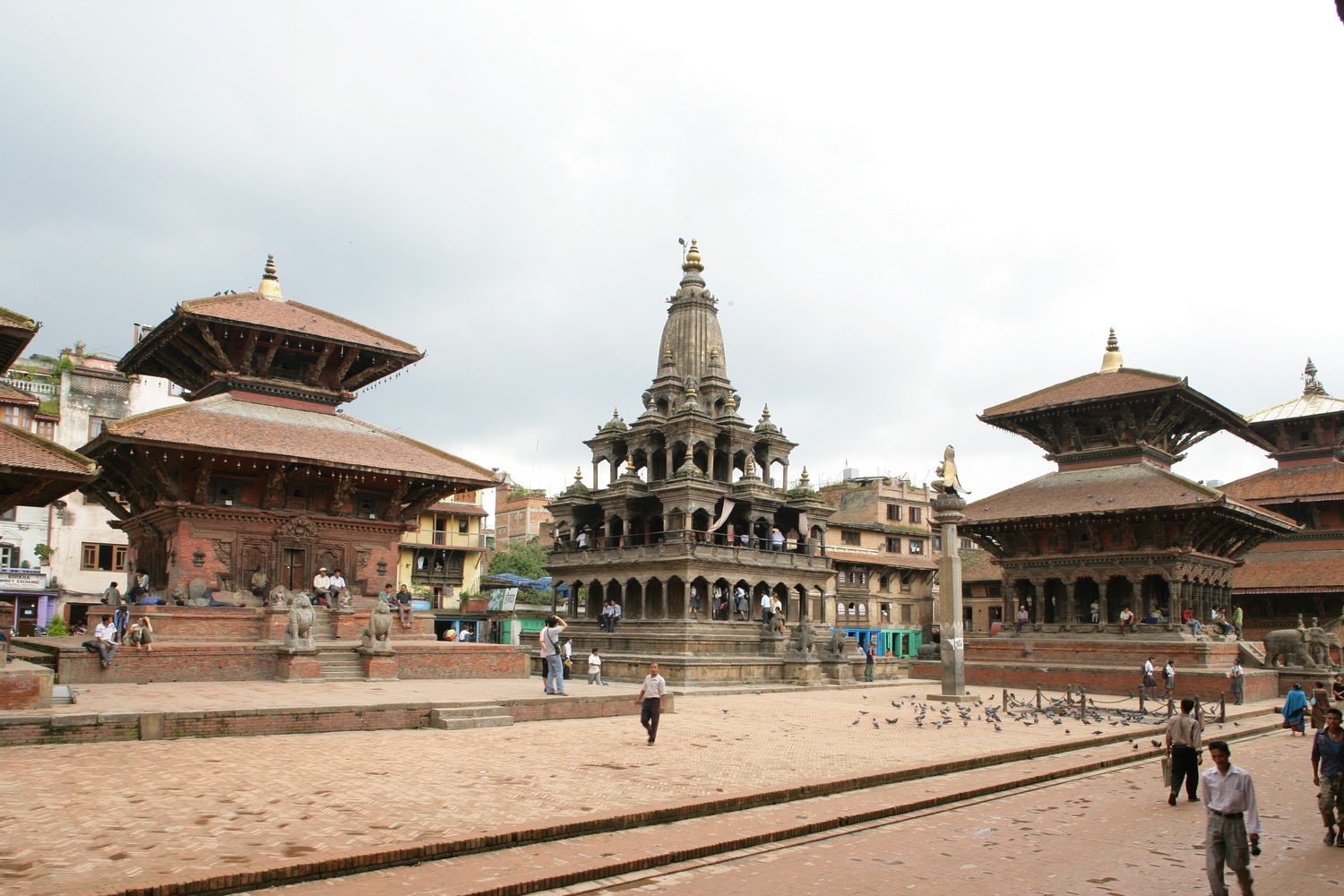
Char Narayan Temple, 2008 (photo: Stanislaw Klimek)
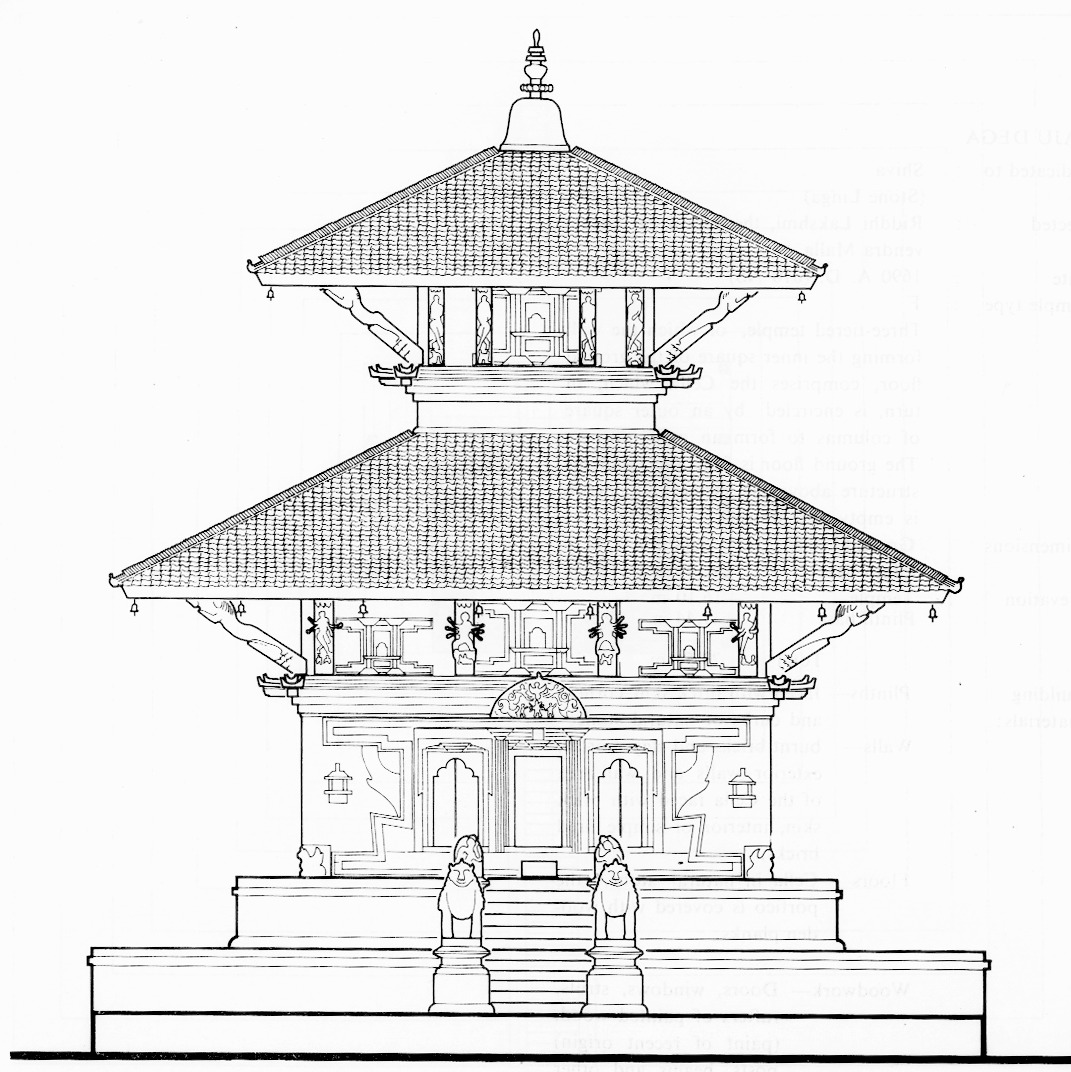
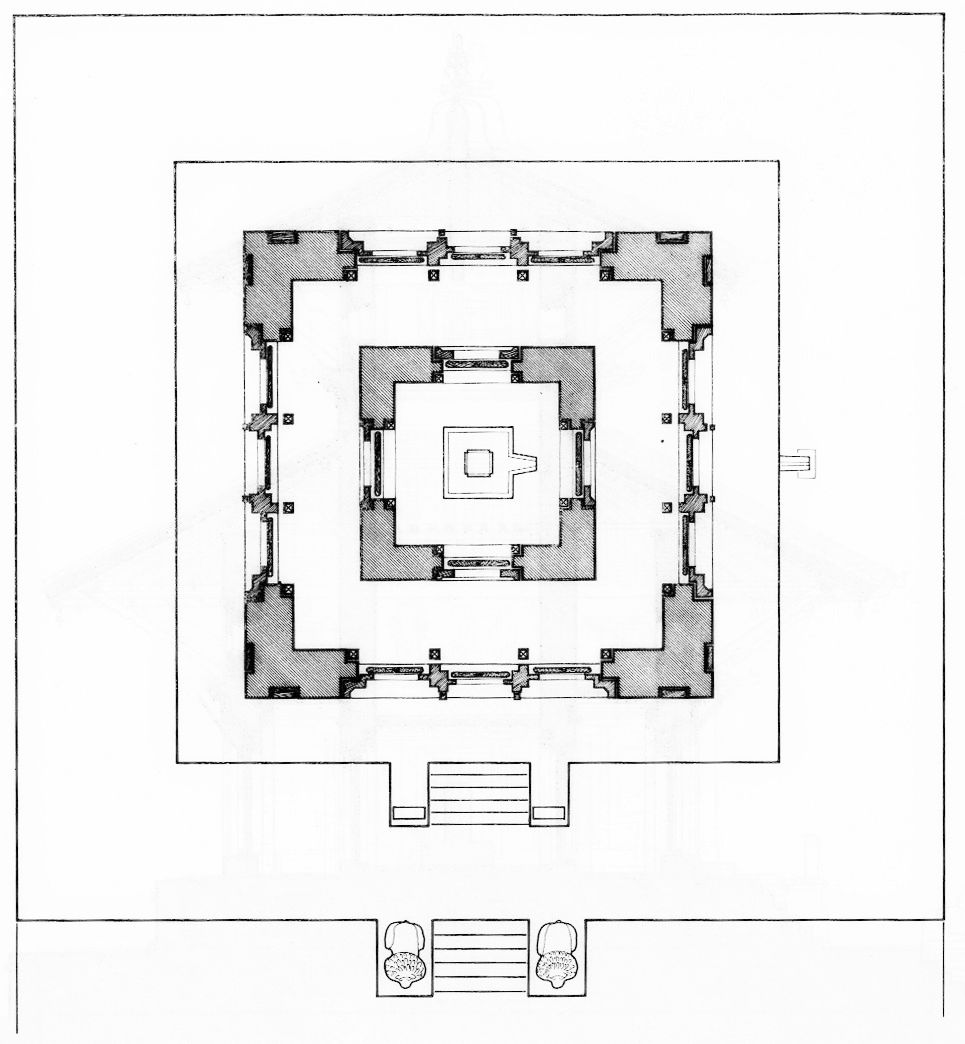
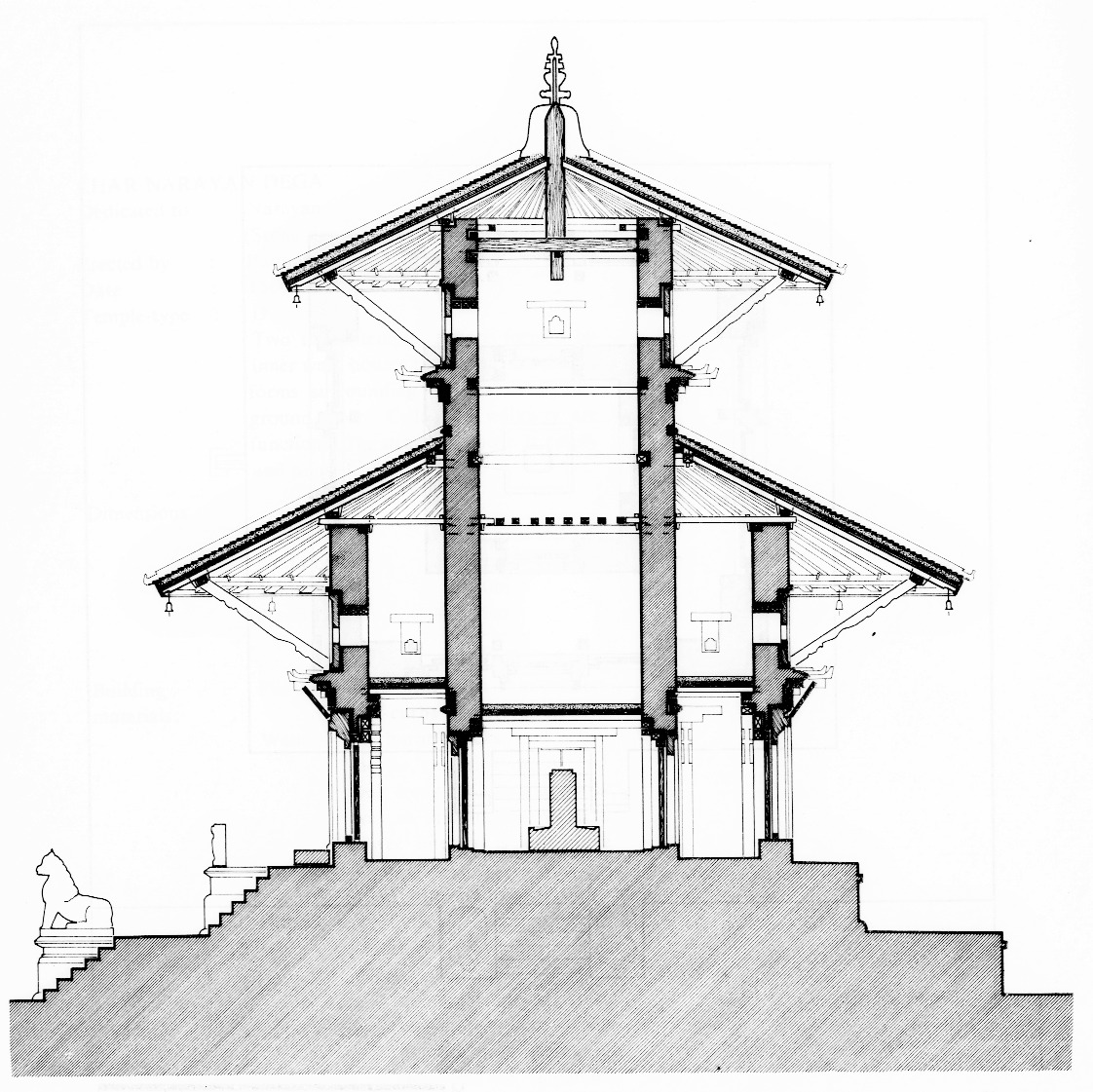
Char Narayan Temple (drawings: Wolfgang Korn, 1976)
Progress Report 1: Meanwhile the first sum has been transferred to Kathmandu Valley Preservation Trust (KVPT) on the basis of a Budget Memorandum between KVPT and SAIHELPNEPAL which guarantees that the funds will only be used for the intended purpose. In the coming months the work force will be increased to a team of 10 carpenters and woodcarvers and 15 laborers to allow identification, cleaning and repair of all of the wooden fragments of the structure, especially those carved features. The money is also used to buy sal wood. On September 1, 2015 a first progress report will be sent and published. Axel Michaels, 25.5.2015
Progress Report 2: Today, the temple of Char Narayan is open for puja and people started worshipping the deity. People seem to be very happy to do that. It makes them heal mentally, especially old age people. We are making small temporary shed above the shrine with four post in the corners and tarpaulin above. Rohit Ranjitkar, 2.6.2015 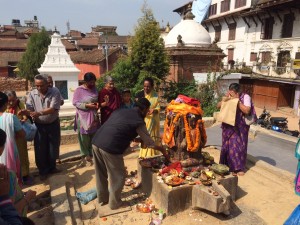
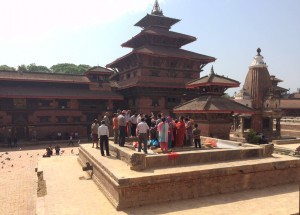
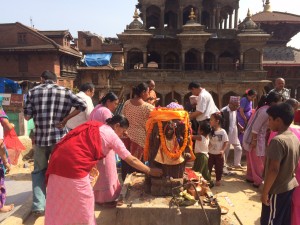
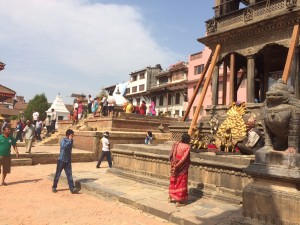
Progress Report 3 (May 2016)
In summer 2015 three carpenters were engaged to restore the inner door frames of the ground floor level. One of the four portals with triple openings was laid out at the workshop in November. For the time being two carpenters are working on the replacement of missing and repair of damaged or even broken parts. Two carpenters will start this month to work on the repair of the tympana that crowned the portals. Unfortunately one tympanum is beyond repair and has to be replaced. The remaining ones will be repaired, small missing parts will be replaced to regain the intended image. The completion of the rebuilding of the temple is expected for early 2019 if the Trust succeeds in raising the shortfall of 350,000 Euro.
————————————————————————————————————————- New progress report: June 30, 2016 See the full report by Kathmandu Valley Preservation Trust here.
Update on Charnarayan and Manimandap
The reconstruction work at the Patan Darbar Square has been ongoing in the workshop at the back of the Patan Palace for the past 2,5 years – craftsmen and carpenters filled missing details from wooden rods and delicate pillars or manufactured completely new parts of the Charnarayan temple and the Manimandapa (photo workshop). Since 2017, is proceeding visibly now on the square itself and in February and March 2018, several members of the SAI Nepalhelp group visited the site (Prof. Dr. Axel Michaels, Prof. Dr. Christiane Brosius, Dr. Manik Bajracharya, Dr. Rajan Kathiwoda).
Since February 2018, one of the two Manimandapas is complete, the second one is envisaged to be finalised by June 2018 (photos Manimandapa). The work on the Charnarayan temple will take some more time but is on a good way (photos charnarayan). The works are still supervised by the Kathmandu Valley Preservation Trust and Niels Gutschow. They are still behind fences, because reconstruction work is going on, but this work and the progress thereof is largely transparent to the public. Signboards attached to the fences and exhibited in other prominent sites mention the support of the SAI Helpnepal initiative (photo signboard).
